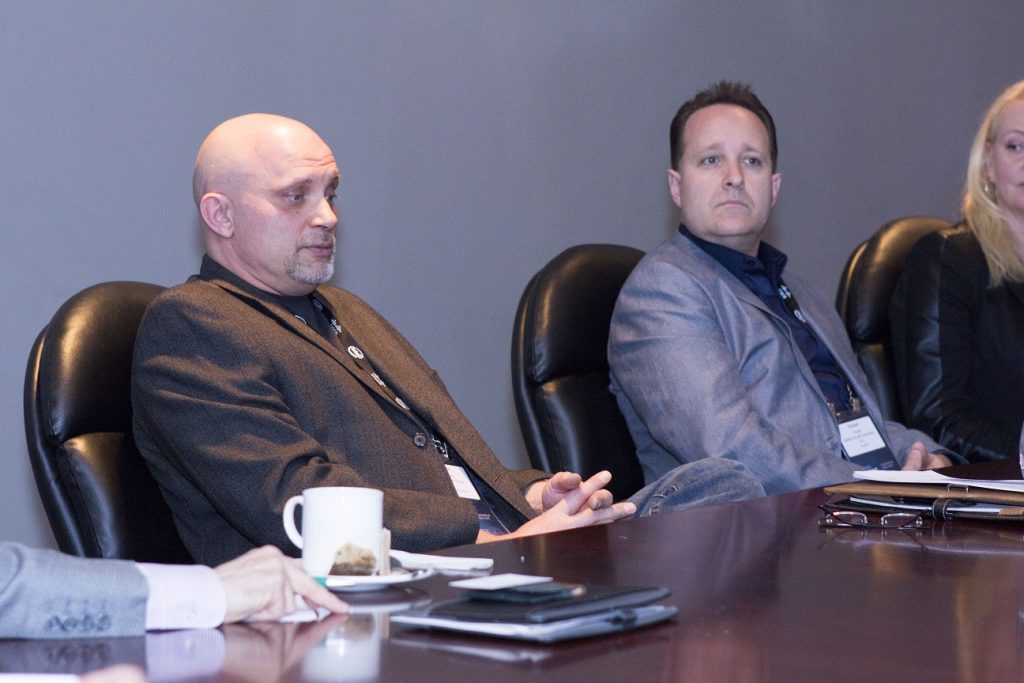
How Cisco Meraki WiFi helped Lone Star Texas Grill improve customer service
3 min read
Lone Star Texas Grill has been bringing authentic Tex-Mex food to Ontarians since 1986. The popular restaurant chain now operates 19 locations across the province. Recently Lone Star’s Bob Macey, senior project manager, sat down with me to discuss the restaurant chain’srecent implementation of Cisco Meraki Cloud Managed Wireless.
Bob Martin: I guess the best place to start would be to ask why you were looking for a new wireless solution.
Bob Macey: Some of our competitors have been introducing guest WiFi in their restaurants. It’s a feature many diners appreciate, especially if they want to hold business lunches or dinners.
We decided we needed to offer WiFi to our guests. At first we tried a solution that relied on a separate DSL connection for access, but it didn’t work well. Ultimately we decided we needed a new solution that offered a reliable signal and connection.

Pictured: Bob Macey (Left) and Rob Duvall (Right)
BM: So what attracted you to Cisco Meraki?
BM: First and foremost we’re a restaurant company. We focus on food and service. We don’t want to build a big IT department and we don’t want to spend a lot maintaining our IT. The fact the solution could be managed completely through the cloud was a big selling point.
Rob Duvall’s, of RDC Networks, technical expertise was also a factor. It was clear he knew what he was talking about when it came to the Cisco Meraki product.
Another feature we liked was the ability to filter our guests’ usage out from our own traffic. We have our own wireless network at the restaurants we use for management purposes and we needed to keep that traffic separate from the guest traffic, but ideally over the same backbone. Cisco Meraki’s filtering meant we could use one backbone and not have to pay for a separate Internet connection for the guest WiFi, which was an instant savings for us.
Finally we liked the product’s ability to monitor traffic flow inside and outside the restaurants. Bob told us an interesting story about a coffee shop that would close at 7 p.m. After the shop installed Cisco Meraki wireless, they noticed there was a lot of foot traffic outside the restaurant between 10 p.m. And 11 p.m. at night. After doing some investigating, they decided to open for those later hours and it significantly boosted their revenue.
BM: How long did the solution take to set up?
BM: It was quick. From the time we decided to move ahead, it took 10 days to get the first product set up and into a trial. Within two weeks we had rolled out to the rest of our locations. Once we saw how well things were going with the trial it was an easy decision to set up the rest. The entire process was very smooth.
BM: What kind of results have you seen?
BM: Well in this field when there’s not a lot of noise, you know things are going well. In the past, I would receive calls about guests having difficulties with our WiFi solution. As soon as we installed the Cisco Meraki access points, those calls stopped. That was about five months ago.
For guest WiFi access, Rob helped us route our WiFi splash page to Facebook so we’ve seen a big increase in traffic there as well.
Of special importance to me is that our staff like it too. Our managers can sit in the restaurant during down times and work on things like inventory or reporting, instead of having to go into the office to get Internet access. It improves their productivity, which benefits the entire company.
BM: So you’re using the access points now mostly for guest WiFi. Do you have plans to do more with them?
BM: Our servers use handheld tablets and we’ve been working with our point-of-sale (POS) provider to use the Cisco Meraki access points as the connection device instead of the existing wireless network. The Cisco products are more reliable and do a much better job of jumping from station to station, so we think there is terrific value in making this change.
We’re also investigating how to leverage the analytics features. The solution can give us tremendous data on repeat customers, store traffic, customer demographics and more – all of which we can use to determine menus, staffing and promotions. Currently, we’re looking at having our guests interact with the menu over the WiFi and down the road we plan to use some of the retail analytics features to help us identify opportunities.
The analytics were one of the reasons we chose Cisco Meraki.
I’d like to extend my thanks to Bob for taking the time to speak with me today. To learn more about Lone Star Texas Grill, please visit their website. And to learn more about Cisco’s Meraki solutions, visit us online.
What do you think about how technology is changing this Canadian restaurant chain? Share your comments below.